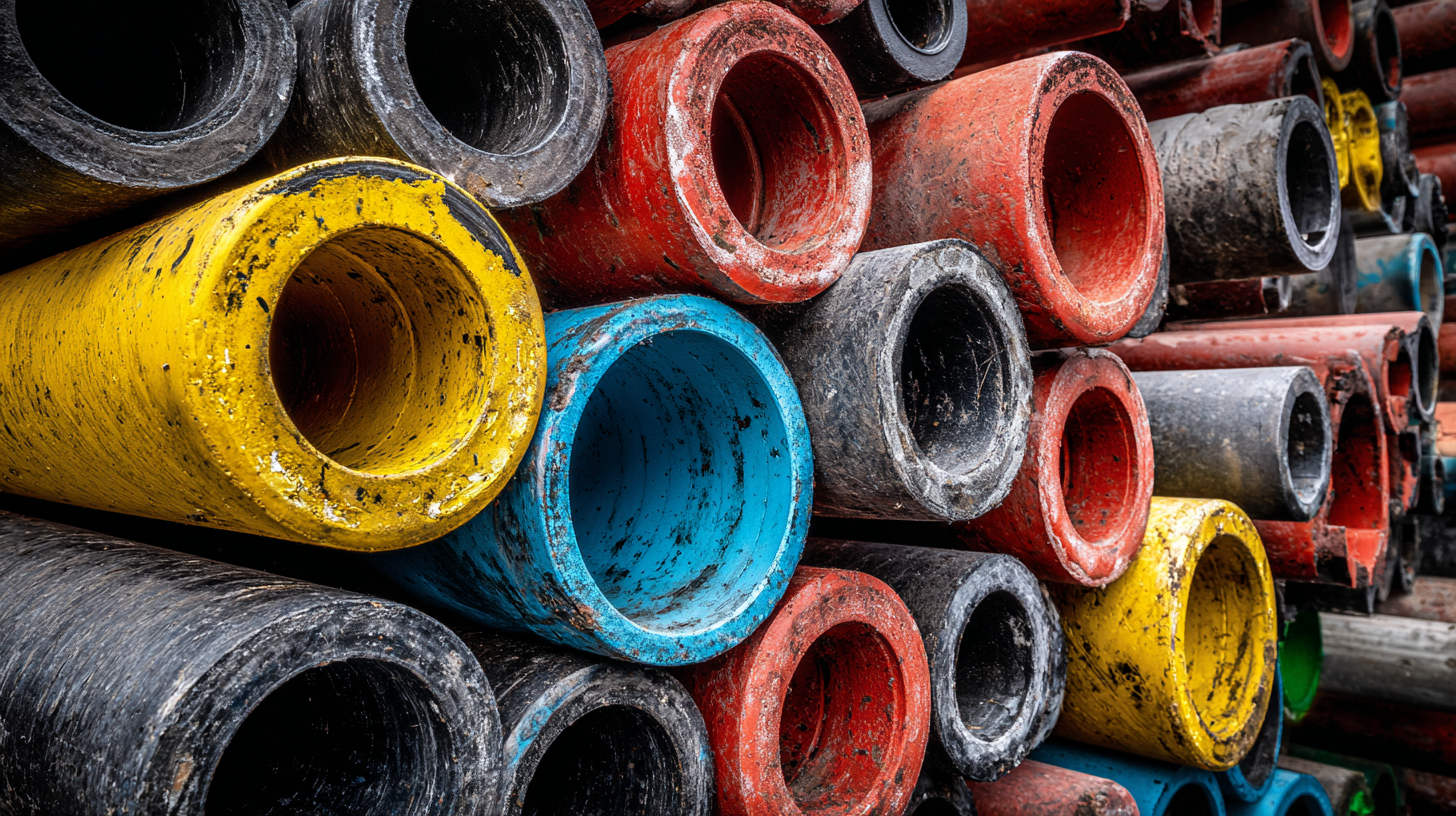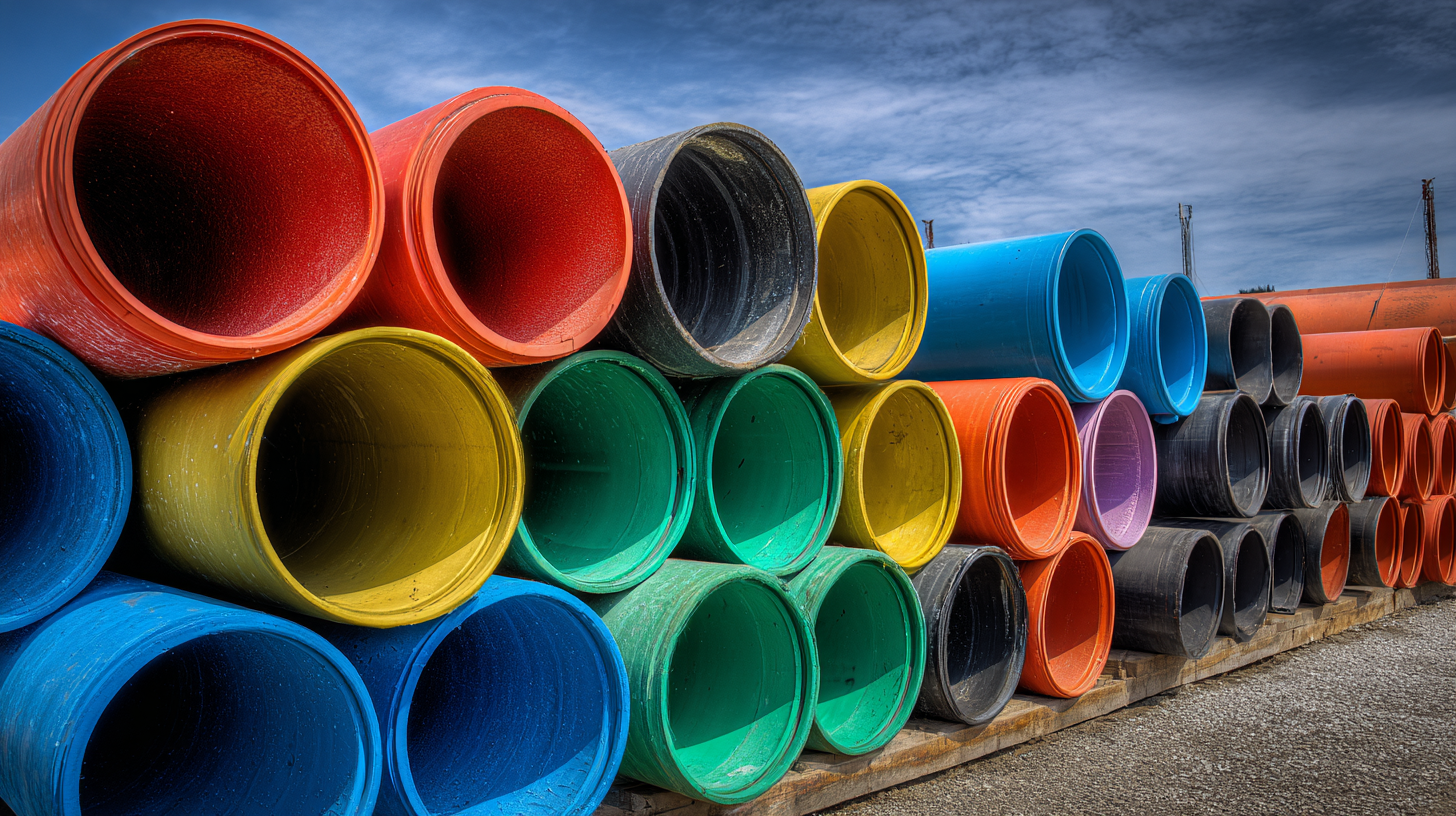The Evolution of Plastic Pipe: Sustainable Solutions for Modern Infrastructure
The evolution of plastic pipe systems has marked a significant transformation in modern infrastructure, driven by the need for sustainable construction practices. As cities expand and the demand for efficient water distribution and sewage systems increases, plastic pipes have emerged as a viable alternative to traditional materials. According to the Plastics Pipe Institute, around 65% of all new water distribution systems in the United States now utilize polyethylene pipes, which offer advantages like lightweight, corrosion resistance, and ease of installation. Furthermore, a report by the American Society of Civil Engineers highlights that utilizing plastic pipe for infrastructure projects can reduce greenhouse gas emissions by up to 55% compared to concrete alternatives. This urgent shift towards sustainable solutions underscores the importance of advancing plastic pipe technology, promoting not only cost-effectiveness but also environmental stewardship in the face of evolving urban demands.

The Historical Development of Plastic Pipe Technologies
The historical development of plastic pipe technologies has significantly transformed modern infrastructure. Since its inception in the mid-20th century, plastic piping has evolved from basic polyvinyl chloride (PVC) applications to more advanced materials such as high-density polyethylene (HDPE) and polybutylene (PB). This evolution was driven by the need for lightweight, durable, and corrosion-resistant materials in various sectors, including water distribution, gas transportation, and wastewater management. The shift from traditional materials such as metal to plastic has not only improved operational efficiencies but has also reduced maintenance costs and extended the lifespan of pipelines.
As the world increasingly prioritizes sustainability, the plastic pipe industry is adapting by introducing smart manufacturing processes that effectively lower carbon emissions and reduce waste. Recent advancements in technology, particularly in China, highlight how innovative production techniques can support a circular economy while facilitating growth in the industry.

For instance, new methods and materials are being explored to meet the rising global demand for environmentally friendly solutions, leading to predictions of significant market growth. As urbanization continues and infrastructure needs expand, these developments will play a crucial role in aligning economic growth with environmental responsibility.
Innovative Materials: From PVC to Biodegradable Alternatives
The shift towards sustainable materials in modern infrastructure has gained significant momentum, particularly in the realm of plastic pipe alternatives. With an increasing awareness of environmental issues, innovative materials such as biodegradable plastics are emerging as viable substitutes for traditional PVC. Notably, Polyhydroxyalkanoates (PHAs), derived from microbial sources, are paving the way for a future where plastic waste is minimized. These eco-friendly materials not only serve functional purposes but also align with the goals of reducing plastic pollution and enhancing circular economy practices.
The development of plant-based alternatives to conventional plastics further emphasizes this trend. Companies are exploring a myriad of materials, including those derived from agricultural waste, to create sustainable packaging solutions and bioplastics that reduce environmental impact. For instance, new technologies are being developed to convert waste materials into biodegradable products, showcasing the potential of innovative thinking in reshaping industries. This evolution reflects a broader commitment to finding materials that meet ecological standards without compromising performance, thus supporting a more sustainable future for infrastructure development and beyond.
Environmental Impact: Assessing the Sustainability of Plastic Pipes
The environmental impact of plastic pipes is a critical consideration in modern infrastructure development. According to a report by the Plastics Pipe Institute, plastic pipes, particularly those made from polyvinyl chloride (PVC) and high-density polyethylene (HDPE), have a lower carbon footprint compared to traditional materials like concrete or metal. For instance, the production of PVC pipes generates approximately 74% less greenhouse gas emissions than concrete pipes over their lifecycle. This significant reduction in carbon output aligns with global sustainability goals, making plastic pipes an appealing option for eco-conscious projects.
Moreover, the longevity and durability of plastic pipes contribute to their sustainability profile. Data from an industry study reveals that HDPE pipes can last over 50 years, reducing the need for frequent replacements and minimizing resource consumption over time. Additionally, plastic pipes are resistant to corrosion and chemical exposure, leading to lower maintenance costs and environmental risks associated with leaks. As the emphasis on sustainable infrastructure grows, these attributes position plastic pipes as a viable solution that not only meets the infrastructure demands of today but also supports a more sustainable future.
Regulatory Framework: The Role of Policies in Promoting Sustainable Pipes
The regulatory framework surrounding the use of sustainable materials in infrastructure, particularly plastic pipes, has become increasingly critical as municipalities and industries strive to meet environmental goals. Agencies such as the Environmental Protection Agency (EPA) and the International Organization for Standardization (ISO) have begun to implement more stringent guidelines to decrease the carbon footprint of construction materials. According to a report by the Plastic Pipe and Fittings Association (PPFA), substitutes for traditional materials in water and wastewater management can reduce greenhouse gas emissions by up to 50% when incorporating sustainable practices.
Furthermore, policies aimed at promoting sustainable pipes play a pivotal role in the adoption of innovative materials that are both reliable and eco-friendly. Legislative measures, such as the U.S. Green Building Council’s LEED certification, underscore the benefits of using high-performance plastic pipes that are durable and recyclable. Research indicates that using high-density polyethylene (HDPE) pipes can lead to a reduction in lifecycle costs of 15-40%, while also extending the lifespan of infrastructure projects due to their resistance to corrosion and lower maintenance requirements. These statistics serve to highlight the importance of regulatory frameworks in fostering a shift toward sustainable solutions that can ultimately benefit both the environment and the economy.
The Evolution of Plastic Pipe: Sustainable Solutions for Modern Infrastructure
| Aspect | Details |
|---|---|
| Material Types | Polyethylene (PE), Polyvinyl Chloride (PVC), Cross-Linked Polyethylene (PEX) |
| Environmental Impact | Lower carbon footprint compared to traditional materials, recyclability |
| Lifespan | 50+ years depending on application and maintenance |
| Regulatory Guidelines | ASTM, ISO standards for quality and safety |
| Sustainable Practices | Use of recycled materials, energy-efficient production processes |
| Future Trends | Biodegradable pipes, smart pipe technologies for leakage detection |
| Global Market Growth | Estimated growth rate of 5% annually in the plastic pipe sector |
Future Directions: Integrating Smart Technology in Plastic Pipe Infrastructure
The integration of smart technology in plastic pipe infrastructure marks a significant shift towards sustainability in modern engineering. By embedding sensors and connectivity within the plastic pipes, municipalities and industries can monitor water flow, pressure, and even detect leaks in real-time. This proactive approach not only minimizes waste but also extends the lifespan of the infrastructure, ensuring that resources are used efficiently and effectively. The evolution of smart plastic pipes is a game-changer that allows for enhanced decision-making based on data-driven insights.

Moreover, the future of plastic pipe infrastructure lies in its ability to adapt and respond to the growing challenges posed by climate change and population growth. By leveraging IoT (Internet of Things) technologies, systems can be developed to automatically adjust to environmental conditions, optimize water distribution, and even contribute to energy savings. With ongoing advancements in design and materials, the convergence of smart technology and plastic pipes promises to transform urban environments into more resilient and sustainable ecosystems, ultimately benefiting both communities and the planet.


